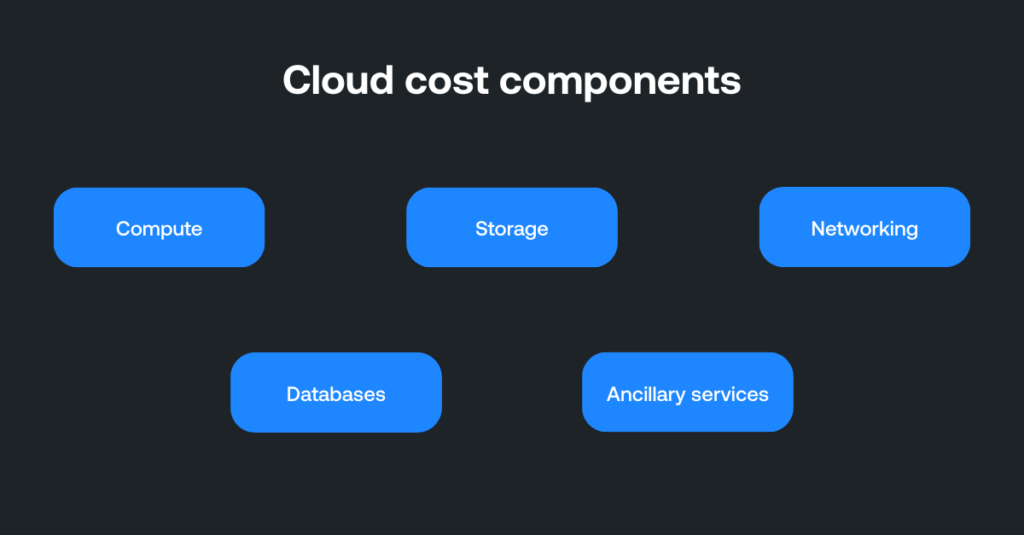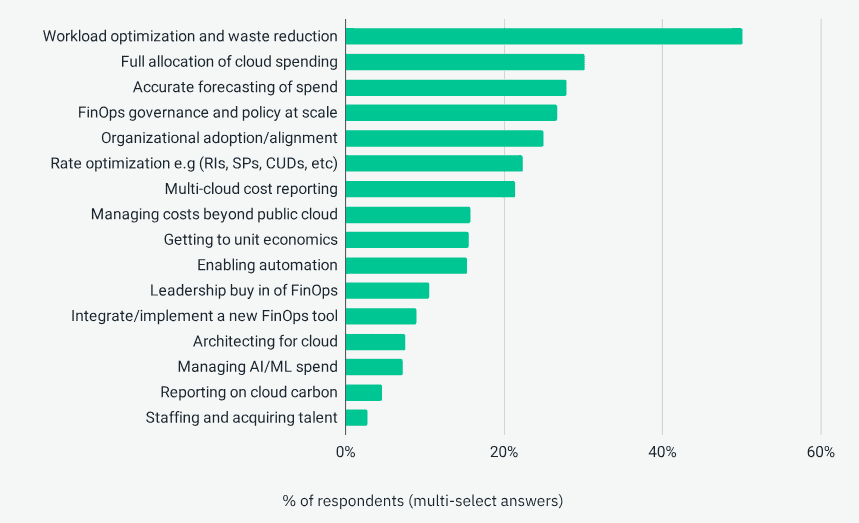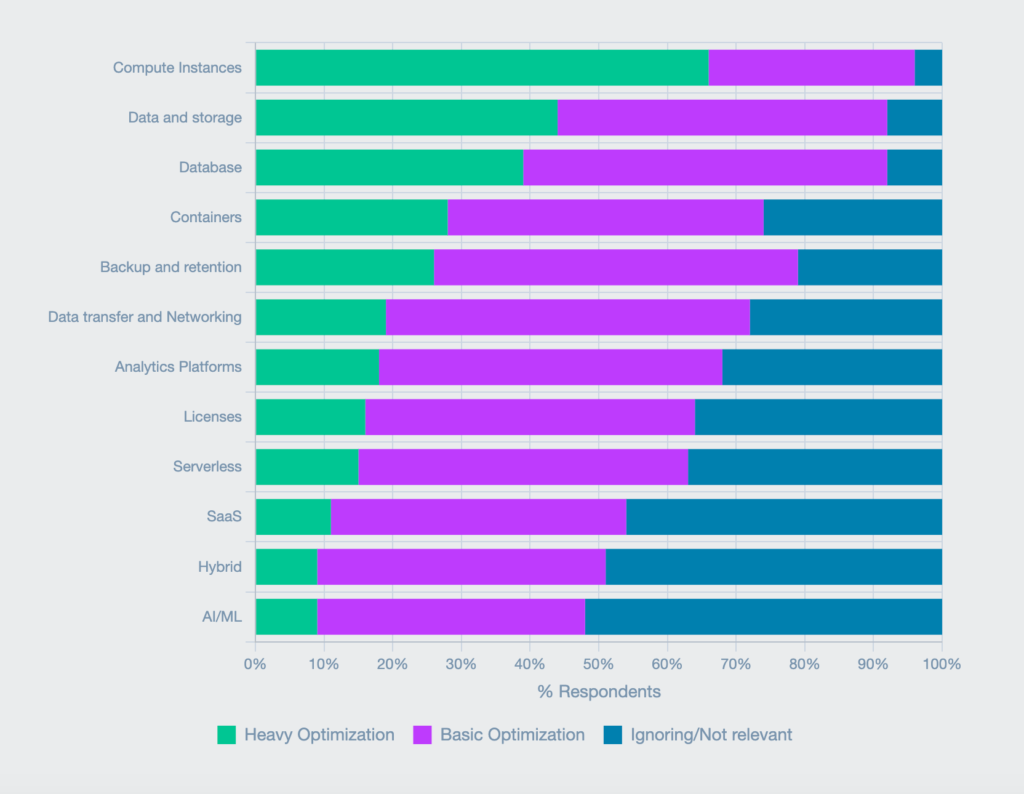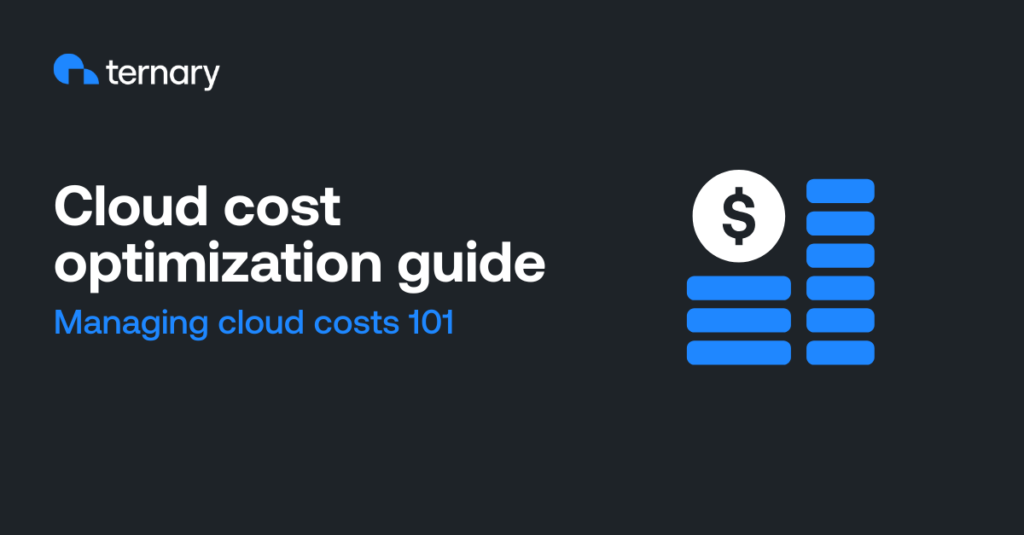Cloud providers love to sell you the dream of “limitless scale.” What they don’t mention is how quickly that turns into “limitless bills.” Many companies waste large percentages of their cloud spend on idle instances, zombie storage, and overprovisioned resources they forgot existed.
But you can prevent that. How, exactly?
Read this guide to learn all you need to know about cloud cost optimization and how to reduce cloud costs without sacrificing a lick of performance.
Let’s begin.
What is cloud cost optimization?
Back when cloud computing was new, companies jumped in without fully grasping the financial implications. Now, don’t get me wrong: Cloud is undoubtedly the future.
However, companies initially spun up instances left and right. Only later did they realize they were paying for idle capacity or overprovisioned resources.
As cloud providers expanded their offerings by adding endless permutations of compute power, memory, storage tiers, and network speeds, it became absurdly easy to pick the wrong configuration. Manual tracking wasn’t cutting it anymore.
That’s when cloud cost optimization evolved from an afterthought to a necessity. Enterprises use cloud cost optimization as a way to analyze, control, and reduce their cloud spending.
Essentially, this process is about ensuring you’re not wasting money on unused resources while still getting the performance you need.
What is the difference between cloud cost optimization vs. cloud cost management?
Cloud cost management is the foundation. You track expenses, allocate budgets, and generate reports to see exactly where every dollar goes.
Then, cloud cost optimization takes that data and puts it to work. It’s the strategic layer that asks: How can we do more with less?
Here’s an example to demonstrate the difference between the two.
Cloud cost management tells you that you’re spending $10,000 a month on underutilized virtual machines (VMs). Cost optimization is what shuts those VMs down or resizes them to match cloud workload requirements.
One gives you the numbers, and the other uses those numbers to drive smarter decisions. Both are critical, but optimization is where the real cloud cost savings happen.
What are some cloud cost components?
Understanding cloud expenses means delving into a whole taxonomy of cost drivers, lurking beneath the surface. Some are obvious, like VMe instances or storage; others can sneak up on you.
If you’re serious about managing cloud costs, you need to dissect every category, because as the saying goes, “The devil is in the details.” Or, in this case, the cloud cost saving is in the details. Here are some of the key cloud cost components:
- Compute. This is the raw processing power (VMs, containers, serverless functions, etc) where overprovisioning is the fastest way to burn cash.
- Storage. This component covers the type (object vs. block vs. file) and access frequency (hot, cool, or archival tiers).
- Networking. Data transfer fees (especially egress), cross-region traffic, and load balancers can turn into budget killers.
- Databases. Choosing managed SQL, NoSQL, or analytics services can bring distinct pricing quirks.
- Ancillary services: Machine learning APIs, monitoring tools, and CI/CD pipelines may seem small individually, but they can add up fast.

Why does cloud cost optimization matter?
If the State of FinOps 2025 report tells us anything, it’s that waste reduction outranks all other cloud priorities. For a second consecutive year, FinOps practitioners named optimizing workloads and slashing inefficiencies as their top cloud priority.

The cloud’s greatest strength—instant, decentralized scalability—is also its biggest financial risk. Engineers spin up resources on demand, often with zero cost oversight. That turns what should be a lean operation into a sprawling expense. Without structured cloud cost management, forecasting becomes guesswork, waste goes unchecked, and budgets bleed silently.
But when it’s done right, optimization enforces accountability. It also improves security through tighter resource controls and forces smarter capacity planning. Companies that master cloud cost optimization gain an advantage by turning what you call a financial black box into a predictable and scalable asset.
Our cloud infrastructure costs were 17% of non-GAAP revenue. We reduced that down to 8% of non-GAAP revenue with Ternary.
Jamie Tischart, CTO at BetterCloud
Get started with the cloud cost optimization process
Cloud bills can feel like a mystery (and not the fun kind). The same things that make the cloud powerful—like self-service and endless scalability—can also make it a budget nightmare.
Teams spin up GPU clusters or high-end databases “just in case” and then forget about them. Until the bill shows up. And the pricing models? Another maze you’d never wish to be trapped in.
SaaS licenses for people who left months ago. IaaS bills that bounce around based on instance types. Hidden network fees from cross-region traffic. You name it. Even the bill itself is a pain. Thousands of line items, weird service names, multiple vendors… It’s all overwhelming.
Finance teams look at the numbers but don’t always know what’s behind them. Meanwhile, engineers know the tech but may not see the budget impact. But cloud cost reduction or optimization really begins when Finance and Engineering talk. Together.
You can’t fix what you can’t see, which brings us to the first of our cloud cost optimization strategies.
1. Gain full cost visibility
If you’re still getting surprised by your cloud bill, you probably have no visibility of your cloud costs. For that, you should consolidate all spending data across regions, services, and teams into a single dashboard.
That dev cluster running 24/7? The abandoned storage buckets from last year’s project? Visibility exposes them instantly.
2. Adopt a bottom-up budgeting approach
Top-down budgets are useless for cloud cost optimization.
Instead, dissect spending by workload, team, or even individual features. This granularity reveals which projects are cost-efficient and which are burning cash with little or no return on investment (ROI).
Engineering teams tend to become more conscientious when they see their own resource usage tied directly to their department’s budget.
3. Track key cost metrics
Some key cost metrics to monitor include:
| Metric | Why it matters |
|---|---|
| Unit cost | Links cloud spend to business output (essential for analyzing ROI) |
| Idle resource cost | Shows pure waste (e.g., VMs running at 5% CPU) |
| Shared infrastructure | Uncovers cross-team inefficiencies in resource allocation |
| Cost/load curve | Exposes scalability flaws (does cost spike with traffic?) |
| Innovation/cost ratio | Balances R&D investment against operational spend |
4. Use preemptible VMs for fault-tolerant workloads
Batch jobs, CI/CD pipelines, and data processing don’t need premium instances.
Preemptible VMs (spot instances) offer the same compute at discounts, with the trade-off of potential interruptions.
For noncritical tasks, that’s a no-brainer for optimizing cloud spend.
5. Rightsize compute resources
Most workloads don’t need the largest VM instance.
Rightsizing (matching CPU, memory, and storage to actual demand) can significantly reduce costs.
The State of FinOps 2024 survey confirms this: Compute and storage remain the top optimization targets as some of the most highly adopted service types.

6. Implement controls and policies (policy as code / governance as code)
Cloud’s flexibility is great for speaking engineering creativity. But without connecting that innovation with visibility, ROI analysis, and financial oversight, costs can quickly spin out of control.
By codifying governance, you automatically enforce things like shutting down idle resources. (You can also stop that one rogue developer from spinning up a fleet of VMs for “testing.”)
These guardrails provide structure, preventing surprise bills. You can avoid the scenario where your CFO bursts into the server room, demanding, “Who ordered $8,000 worth of GPU time?!”
7. Adopt serverless and managed services
Stop reinventing the wheel (and paying to maintain it).
Services like BigQuery or Cloud SQL handle scaling, patching, and backups for you while freeing engineers from ops drudgery.
8. Optimize storage costs
Storage is the attic of the cloud: full of junk you forgot existed. But it doesn’t have to be that way.
Features like Google Cloud’s Autoclass, automatically shuffle your files into the most cost-effective storage tier based on usage patterns.
Moreover, life-cycle policies let you delete old, useless backups (yes, even that one labeled “final_final_REALLYFINAL_2.zip”).
A well-tuned storage strategy can halve costs without losing a single byte you actually need.
9. Foster a cost-conscious culture
You need a team that treats cloud resources as if they’re spending their own paycheck.
This collaboration is what FinOps fosters. It is a cross-functional approach where engineering and finance teams work together to track KPIs and reduce waste.
Throw in a little gamification, like a leaderboard for who can save the most on their monthly compute spend. Suddenly, cost optimization becomes a team sport.
Plus, ongoing training helps keep everyone on the team sharp. Because knowing how to deploy efficiently is the difference between being a cloud wizard and being the guy who accidentally left the dev cluster running for three months.
Future trends and innovations in cloud cost optimization
Over the next year, we’re seeing a shift: Workload optimization and waste reduction are dropping in priority by 21%. Why? Because everyone has already tackled the low-hanging fruit of cloud cost savings.
Once you’ve done the easy stuff, you realize that, to keep the benefits coming, you need rules. Structures. Policies. That’s where implementing governance at scale becomes the big new focus in the cloud optimization strategy playbook.
You may start out with “Let’s just plug this in and see what happens.” But, to grow at scale, you’ll need complex automation systems, policies, and detailed tagging mechanisms.
You can’t keep saving money by manually turning off dev environments on weekends anymore. Unlocking real savings at scale is all about AI.
AI-powered tools are fast. They monitor and optimize faster than any human ever could. They are also much better than humans at catching inefficiencies.
Best of all? AI tools can free IT teams from putting out cost fires. Instead, they can start working on stuff that actually moves the business forward.
Moreover, if you can’t track who owns what in your cloud environment, congratulations, you’re going to have one big, expensive mess.
More mature companies are now automating governance to make sure every resource is tied to a team or project.
Cloud cost optimization FAQs
What are the different types of cloud costs?
Cloud costs can be broken down into several key components. Below are a few examples of service categories and specific types of costs.
- Compute: expenses for processing power (vCPUs), memory (RAM), and temporary storage required to run applications
- Storage: fees for storing data, including object storage (like S3), elastic block storage (EBS), and elastic file storage (EFS)
- Data transfer: charges for moving data in and out of cloud environments, especially egress fees for sending data outside the cloud provider’s network
- Support: payments for technical assistance, including premium support plans
- Hidden: often-overlooked expenses like idle instances, overprovisioned resources, or poorly optimized architectures
What is the difference between cost optimization and usage optimization?
Cloud cost optimization techniques focus on reducing expenses, such as switching to cheaper instance types or eliminating unused resources.
Cloud usage optimization, on the other hand, improves how efficiently resources are utilized. Examples include rightsizing workloads or improving application performance.
While cost optimization can reduce spending directly, usage optimization ensures you get maximum value from what you’re already paying for.
How can automation reduce cloud costs?
Automation minimizes manual errors and ensures resources are used efficiently. For example:
- Autoscaling adjusts capacity based on demand, preventing overprovisioning.
- Scheduled shutdowns turn off noncritical resources during off-hours.
- Policy-based enforcement automatically terminates unused instances or enforces tagging.
By automating these processes, businesses can reduce waste and maintain cost discipline without expending human resources on oversight.
Optimize cloud costs with Ternary
Now you’ve got the full playbook of cloud cost optimization.
But let’s be real: Doing this manually, while possible, is not efficient.
That’s why you should use Ternary.
Ternary is a multi-cloud FinOps platform that automates cost tracking, slashes waste, and enforces governance. Leading companies use Ternary and implement these cloud cost optimization best practices. Their success and savings prove that our platform turns cloud cost optimization from a chaotic scramble into a repeatable science.
Want to stop bleeding cash and start optimizing like a pro?
